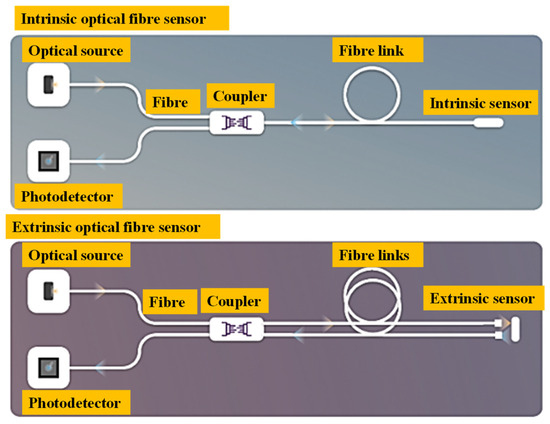Optimize Your Fiber Optic Performance: Comprehending Optical Fibre Diameter Analyser Modern Technology
The performance of fibre optic systems is critically affected by the accuracy of their diameter, a factor frequently forgot in the search of ideal signal integrity. Understanding the modern technology behind optical fiber diameter analysers exposes the complex equilibrium between measurement accuracy and production top quality.
Relevance of Optical Fiber Size
The size of optical fiber plays a critical role in figuring out the efficiency and effectiveness of communication systems. On the other hand, smaller sizes often tend to support fewer settings, which can boost signal quality and reduce crosstalk.

Furthermore, understanding the size's effects can bring about cost savings by lowering the requirement for signal amplification and repeaters in extensive networks (optical fibre diameter analyser). To conclude, the importance of optical fibre diameter can not be overemphasized, as it directly impacts the overall effectiveness and dependability of contemporary communication systems

How Size Impacts Signal Quality
Signal quality in optical fiber systems hinges dramatically on the diameter of the fiber. The diameter influences several key specifications, including attenuation, transmission capacity, and modal dispersion. A smaller size can result in greater attenuation rates, causing signal loss as light travels via the fibre. This depletion can jeopardize the honesty of the transmitted data, causing a decline in signal top quality, particularly over cross countries.
On the other hand, bigger diameters normally allow for enhanced light capture and decreased modal diffusion, enhancing signal clarity. In multimode fibers, a bigger core diameter can sustain numerous light settings, but it might likewise introduce intermodal diffusion, which can weaken signal top quality. As a result, picking the optimum fiber size is vital for attaining the desired performance in specific applications.
Moreover, the interaction in between the fibre diameter and the wavelength of the light made use of plays an essential function in figuring out the effective transmission distance and total signal stability. Understanding how fibre diameter impacts signal high quality is crucial for network designers and engineers making every effort to optimize optical fibre systems for trustworthy, high-speed data transmission.
Review of Size Analyser Technology
In numerous optical fiber production processes, precise measurement of fiber diameter is vital for making certain regular performance and high quality (optical fibre diameter analyser). Diameter analysers are advanced tools made to evaluate the physical dimensions of optical fibres with high accuracy. They use innovative optical and laser technologies to gauge the diameter, ovality, and concentricity of the fiber, hence giving crucial information for high quality control
These analysers can operate in-line throughout the manufacturing procedure or as part of off-line screening procedures. In-line systems enable real-time surveillance, permitting manufacturers to adjust specifications promptly, consequently maintaining ideal manufacturing conditions. Off-line analysers, on the other hand, offer detailed assessments of sets, guaranteeing that any kind of deviations from specified resistances are determined go to my blog and dealt with.
Diameter analysers substantially contribute to the reduction of flaws in optical fibres, boosting overall product reliability. By regularly determining crucial criteria, these modern technologies facilitate compliance with industry criteria and specs. As the need for high-performance optical fibres remains to increase, the duty of size analysers ends up being significantly vital in attaining the desired high quality and performance standards in fibre optic systems.
Key Functions of Fibre Diameter Analysers
Although different models of fibre size analysers exist, they commonly share a number of essential features that boost their capability and reliability. Among the most considerable functions is high-resolution measurement capacities, which make sure precise diameter analyses, essential for keeping quality control in fiber manufacturing. Furthermore, several analysers include innovative optical sensing units made to detect minute variations in fibre size, thus supplying invaluable information for procedure optimization.
An additional important attribute is real-time monitoring, enabling drivers to get prompt feedback on fibre diameter throughout the production procedure (optical fibre diameter analyser). This capability promotes quick changes and minimizes the probability of issues. content Several analysers additionally come equipped with easy to use interfaces, enabling drivers to quickly navigate with settings and data outcomes
In addition, durable data storage space and analysis functionalities are important for tracking historic efficiency fads and guaranteeing conformity with market standards. These attributes collectively contribute to the efficacy of fibre diameter analysers in optimizing fiber optic efficiency.
Ideal Practices for Fibre Optimization

First, regular calibration of optical fibre diameter analysers is crucial. This guarantees precise measurements and reduces possible disparities that can impact efficiency. Next off, maintaining a tidy workplace is vital; dirt and contaminants can bring about signal deterioration.
In addition, it is very important to select fibers that meet particular application demands. This involves reviewing aspects such as attenuation, bandwidth, and ecological conditions. Appropriate installment techniques should additionally be complied with, including preventing sharp bends and extreme stress, which can compromise fibre look at this website integrity.
Moreover, employing advanced surveillance systems can promote real-time efficiency analyses, allowing timely recognition of issues. Routine testing and maintenance should be performed to make certain that fibres continue to be within optimum operational criteria.
Last but not least, training workers on the most recent fiber optimization modern technologies and methodologies will enhance their capacity to carry out efficient approaches. By complying with these finest methods, organizations can significantly boost the efficiency and lifespan of their optical fibre systems, guaranteeing efficient communication and information transfer.
Verdict
In final thought, the combination of optical fiber size analyser innovation is vital for making best use of fibre optic performance. By ensuring exact dimensions of fibre measurements, these analysers substantially boost signal high quality and minimize losses during information transmission. Normal calibration and maintenance of the analysers are vital to support optimum performance and compliance with sector criteria. Inevitably, the application of this innovation facilitates enhanced information transmission rates and reinforces signal stability, contributing to the general efficiency of fiber optic systems.
Signal top quality in optical fibre systems hinges dramatically on the size of the fibre.In many optical fibre production procedures, accurate measurement of fibre diameter is crucial for making sure regular efficiency and quality. As the demand for high-performance optical fibers continues to rise, the function of diameter analysers becomes progressively essential in attaining the desired high quality and efficiency criteria in fiber optic systems.
These features jointly add to the efficacy of fibre diameter analysers in maximizing fiber optic performance.
In verdict, the integration of optical fibre diameter analyser innovation is vital for making best use of fibre optic efficiency.